NCRI Mission
NCRI Mission
The National Council of Resistance of Iran (NCRI) is a democratic coalition of Iranian opposition organizations and personalities dedicated to establishing a democratic, secular, and non-nuclear republic in Iran.
The National Council of Resistance of Iran (NCRI) is a democratic coalition of Iranian opposition organizations and personalities dedicated to establishing a democratic, secular, and non-nuclear republic in Iran.
About NCRI
About NCRI
The NCRI, founded in Tehran in July 1981 by Iranian Resistance leader Massoud Rajavi, is the longest-standing political coalition in Iran’s modern history, dedicated to ending the religious dictatorship.
The NCRI serves as the Iranian people's parliament-in-exile, boasting 460 members, with 52% being women, underscoring its long-standing commitment to gender equality. The Council also includes representatives from diverse political perspectives and beliefs.
The NCRI is proudly diverse, featuring representatives from various ethnicities and groups that are often silenced in Iran; committed to inclusivity and ensuring every voice is heard.
Supported
By
Supported By
Supported By
125+
former heads of state
4000
members of parliament
60+
legislative assemblies
75+
Nobel laureates
The Democratic Alternative
A Clear Vision for Iran's Future
A Clear Vision for Iran's Future
The NCRI offers a clear and strong alternative to the Iranian regime, built on decades of fighting for democracy and human rights. Since it was founded, the NCRI has carefully developed a detailed plan for the provisional government after the fall of the Mullahs.
The NCRI offers a clear and strong alternative to the Iranian regime, built on decades of fighting for democracy and human rights. Since it was founded, the NCRI has carefully developed a detailed plan for the provisional government after the fall of the Mullahs.
Iran Solution: Third Option
For over four decades, Iran’s people and organized Resistance have fought against a repressive theocracy.
As Maryam Rajavi told the European Parliament on 18 June 2025, the only viable solution to the current crisis is regime change by the Iranian people and their organized Resistance.
In December 2004, she stated at the European Parliament that the solution for Iran lies neither in appeasement nor in war, but in a third option: regime change by the people of Iran and the organized resistance. She further warned that "the policy of appeasement encourages the clerical regime to persist in its policies and, ultimately imposes war upon Western nations."
Today, that message is more urgent than ever. Lasting peace and security in this part of the world require regime change in Iran, by the Iranian people and their organized Resistance.
The Struggle
The NCRI has been deeply engaged in a prolonged struggle against the regime, enduring immense hardships and making profound sacrifices, with thousands of supporters losing their lives in the pursuit of freedom and democracy for Iran.
Rejection of Tyranny
The NCRI was founded on rejecting all forms of dictatorship, from the oppressive and corrupt regimes of both the Shah (the former monarch) and the mullahs (religious dictatorship). It stands for freedom, democracy, gender equality, human rights, and social and economic justice.
A Different Future
Unlike monarchic and religious dictatorships which have caused severe oppression and hardship, the NCRI offers a path based on democratic values and the power of the people.
Commitment to Free Elections
Free elections are at the heart of the NCRI’s principles. After the 1979 Revolution, despite promises of democratic reform, an authoritarian theocratic regime was established. The NCRI is committed to ensuring that governance is ultimately determined by the free, equal, and confidential vote of the Iranian people. Dedicated to transferring sovereignty to the people, the NCRI's platform firmly upholds their right to determine their own future.
Iran Solution: Third Option
For over four decades, Iran’s people and organized Resistance have fought against a repressive theocracy.
As Maryam Rajavi told the European Parliament on 18 June 2025, the only viable solution to the current crisis is regime change by the Iranian people and their organized Resistance.
In December 2004, she stated at the European Parliament that the solution for Iran lies neither in appeasement nor in war, but in a third option: regime change by the people of Iran and the organized resistance. She further warned that "the policy of appeasement encourages the clerical regime to persist in its policies and, ultimately imposes war upon Western nations."
Today, that message is more urgent than ever. Lasting peace and security in this part of the world require regime change in Iran, by the Iranian people and their organized Resistance.
The Struggle
The NCRI has been deeply engaged in a prolonged struggle against the regime, enduring immense hardships and making profound sacrifices, with thousands of supporters losing their lives in the pursuit of freedom and democracy for Iran.
Rejection of Tyranny
The NCRI was founded on rejecting all forms of dictatorship, from the oppressive and corrupt regimes of both the Shah (the former monarch) and the mullahs (religious dictatorship). It stands for freedom, democracy, gender equality, human rights, and social and economic justice.
A Different Future
Unlike monarchic and religious dictatorships which have caused severe oppression and hardship, the NCRI offers a path based on democratic values and the power of the people.
Commitment to Free Elections
Free elections are at the heart of the NCRI’s principles. After the 1979 Revolution, despite promises of democratic reform, an authoritarian theocratic regime was established. The NCRI is committed to ensuring that governance is ultimately determined by the free, equal, and confidential vote of the Iranian people. Dedicated to transferring sovereignty to the people, the NCRI's platform firmly upholds their right to determine their own future.
Iran Solution: Third Option
For over four decades, Iran’s people and organized Resistance have fought against a repressive theocracy.
As Maryam Rajavi told the European Parliament on 18 June 2025, the only viable solution to the current crisis is regime change by the Iranian people and their organized Resistance.
In December 2004, she stated at the European Parliament that the solution for Iran lies neither in appeasement nor in war, but in a third option: regime change by the people of Iran and the organized resistance. She further warned that "the policy of appeasement encourages the clerical regime to persist in its policies and, ultimately imposes war upon Western nations."
Today, that message is more urgent than ever. Lasting peace and security in this part of the world require regime change in Iran, by the Iranian people and their organized Resistance.
The Struggle
The NCRI has been deeply engaged in a prolonged struggle against the regime, enduring immense hardships and making profound sacrifices, with thousands of supporters losing their lives in the pursuit of freedom and democracy for Iran.
Rejection of Tyranny
The NCRI was founded on rejecting all forms of dictatorship, from the oppressive and corrupt regimes of both the Shah (the former monarch) and the mullahs (religious dictatorship). It stands for freedom, democracy, gender equality, human rights, and social and economic justice.
A Different Future
Unlike monarchic and religious dictatorships which have caused severe oppression and hardship, the NCRI offers a path based on democratic values and the power of the people.
Commitment to Free Elections
Free elections are at the heart of the NCRI’s principles. After the 1979 Revolution, despite promises of democratic reform, an authoritarian theocratic regime was established. The NCRI is committed to ensuring that governance is ultimately determined by the free, equal, and confidential vote of the Iranian people. Dedicated to transferring sovereignty to the people, the NCRI's platform firmly upholds their right to determine their own future.
Iran Solution: Third Option
For over four decades, Iran’s people and organized Resistance have fought against a repressive theocracy.
As Maryam Rajavi told the European Parliament on 18 June 2025, the only viable solution to the current crisis is regime change by the Iranian people and their organized Resistance.
In December 2004, she stated at the European Parliament that the solution for Iran lies neither in appeasement nor in war, but in a third option: regime change by the people of Iran and the organized resistance. She further warned that "the policy of appeasement encourages the clerical regime to persist in its policies and, ultimately imposes war upon Western nations."
Today, that message is more urgent than ever. Lasting peace and security in this part of the world require regime change in Iran, by the Iranian people and their organized Resistance.
The Struggle
The NCRI has been deeply engaged in a prolonged struggle against the regime, enduring immense hardships and making profound sacrifices, with thousands of supporters losing their lives in the pursuit of freedom and democracy for Iran.
Rejection of Tyranny
The NCRI was founded on rejecting all forms of dictatorship, from the oppressive and corrupt regimes of both the Shah (the former monarch) and the mullahs (religious dictatorship). It stands for freedom, democracy, gender equality, human rights, and social and economic justice.
A Different Future
Unlike monarchic and religious dictatorships which have caused severe oppression and hardship, the NCRI offers a path based on democratic values and the power of the people.
Commitment to Free Elections
Free elections are at the heart of the NCRI’s principles. After the 1979 Revolution, despite promises of democratic reform, an authoritarian theocratic regime was established. The NCRI is committed to ensuring that governance is ultimately determined by the free, equal, and confidential vote of the Iranian people. Dedicated to transferring sovereignty to the people, the NCRI's platform firmly upholds their right to determine their own future.
Iran Solution: Third Option
For over four decades, Iran’s people and organized Resistance have fought against a repressive theocracy.
As Maryam Rajavi told the European Parliament on 18 June 2025, the only viable solution to the current crisis is regime change by the Iranian people and their organized Resistance.
In December 2004, she stated at the European Parliament that the solution for Iran lies neither in appeasement nor in war, but in a third option: regime change by the people of Iran and the organized resistance. She further warned that "the policy of appeasement encourages the clerical regime to persist in its policies and, ultimately imposes war upon Western nations."
Today, that message is more urgent than ever. Lasting peace and security in this part of the world require regime change in Iran, by the Iranian people and their organized Resistance.
The Struggle
The NCRI has been deeply engaged in a prolonged struggle against the regime, enduring immense hardships and making profound sacrifices, with thousands of supporters losing their lives in the pursuit of freedom and democracy for Iran.
Rejection of Tyranny
The NCRI was founded on rejecting all forms of dictatorship, from the oppressive and corrupt regimes of both the Shah (the former monarch) and the mullahs (religious dictatorship). It stands for freedom, democracy, gender equality, human rights, and social and economic justice.
A Different Future
Unlike monarchic and religious dictatorships which have caused severe oppression and hardship, the NCRI offers a path based on democratic values and the power of the people.
Commitment to Free Elections
Free elections are at the heart of the NCRI’s principles. After the 1979 Revolution, despite promises of democratic reform, an authoritarian theocratic regime was established. The NCRI is committed to ensuring that governance is ultimately determined by the free, equal, and confidential vote of the Iranian people. Dedicated to transferring sovereignty to the people, the NCRI's platform firmly upholds their right to determine their own future.
Iran Solution: Third Option
For over four decades, Iran’s people and organized Resistance have fought against a repressive theocracy.
As Maryam Rajavi told the European Parliament on 18 June 2025, the only viable solution to the current crisis is regime change by the Iranian people and their organized Resistance.
In December 2004, she stated at the European Parliament that the solution for Iran lies neither in appeasement nor in war, but in a third option: regime change by the people of Iran and the organized resistance. She further warned that "the policy of appeasement encourages the clerical regime to persist in its policies and, ultimately imposes war upon Western nations."
Today, that message is more urgent than ever. Lasting peace and security in this part of the world require regime change in Iran, by the Iranian people and their organized Resistance.
The Struggle
The NCRI has been deeply engaged in a prolonged struggle against the regime, enduring immense hardships and making profound sacrifices, with thousands of supporters losing their lives in the pursuit of freedom and democracy for Iran.
Rejection of Tyranny
The NCRI was founded on rejecting all forms of dictatorship, from the oppressive and corrupt regimes of both the Shah (the former monarch) and the mullahs (religious dictatorship). It stands for freedom, democracy, gender equality, human rights, and social and economic justice.
A Different Future
Unlike monarchic and religious dictatorships which have caused severe oppression and hardship, the NCRI offers a path based on democratic values and the power of the people.
Commitment to Free Elections
Free elections are at the heart of the NCRI’s principles. After the 1979 Revolution, despite promises of democratic reform, an authoritarian theocratic regime was established. The NCRI is committed to ensuring that governance is ultimately determined by the free, equal, and confidential vote of the Iranian people. Dedicated to transferring sovereignty to the people, the NCRI's platform firmly upholds their right to determine their own future.
Iran Solution: Third Option
For over four decades, Iran’s people and organized Resistance have fought against a repressive theocracy.
As Maryam Rajavi told the European Parliament on 18 June 2025, the only viable solution to the current crisis is regime change by the Iranian people and their organized Resistance.
In December 2004, she stated at the European Parliament that the solution for Iran lies neither in appeasement nor in war, but in a third option: regime change by the people of Iran and the organized resistance. She further warned that "the policy of appeasement encourages the clerical regime to persist in its policies and, ultimately imposes war upon Western nations."
Today, that message is more urgent than ever. Lasting peace and security in this part of the world require regime change in Iran, by the Iranian people and their organized Resistance.
The Struggle
The NCRI has been deeply engaged in a prolonged struggle against the regime, enduring immense hardships and making profound sacrifices, with thousands of supporters losing their lives in the pursuit of freedom and democracy for Iran.
Rejection of Tyranny
The NCRI was founded on rejecting all forms of dictatorship, from the oppressive and corrupt regimes of both the Shah (the former monarch) and the mullahs (religious dictatorship). It stands for freedom, democracy, gender equality, human rights, and social and economic justice.
A Different Future
Unlike monarchic and religious dictatorships which have caused severe oppression and hardship, the NCRI offers a path based on democratic values and the power of the people.
Commitment to Free Elections
Free elections are at the heart of the NCRI’s principles. After the 1979 Revolution, despite promises of democratic reform, an authoritarian theocratic regime was established. The NCRI is committed to ensuring that governance is ultimately determined by the free, equal, and confidential vote of the Iranian people. Dedicated to transferring sovereignty to the people, the NCRI's platform firmly upholds their right to determine their own future.
Iran Solution: Third Option
For over four decades, Iran’s people and organized Resistance have fought against a repressive theocracy.
As Maryam Rajavi told the European Parliament on 18 June 2025, the only viable solution to the current crisis is regime change by the Iranian people and their organized Resistance.
In December 2004, she stated at the European Parliament that the solution for Iran lies neither in appeasement nor in war, but in a third option: regime change by the people of Iran and the organized resistance. She further warned that "the policy of appeasement encourages the clerical regime to persist in its policies and, ultimately imposes war upon Western nations."
Today, that message is more urgent than ever. Lasting peace and security in this part of the world require regime change in Iran, by the Iranian people and their organized Resistance.
The Struggle
The NCRI has been deeply engaged in a prolonged struggle against the regime, enduring immense hardships and making profound sacrifices, with thousands of supporters losing their lives in the pursuit of freedom and democracy for Iran.
Rejection of Tyranny
The NCRI was founded on rejecting all forms of dictatorship, from the oppressive and corrupt regimes of both the Shah (the former monarch) and the mullahs (religious dictatorship). It stands for freedom, democracy, gender equality, human rights, and social and economic justice.
A Different Future
Unlike monarchic and religious dictatorships which have caused severe oppression and hardship, the NCRI offers a path based on democratic values and the power of the people.
Commitment to Free Elections
Free elections are at the heart of the NCRI’s principles. After the 1979 Revolution, despite promises of democratic reform, an authoritarian theocratic regime was established. The NCRI is committed to ensuring that governance is ultimately determined by the free, equal, and confidential vote of the Iranian people. Dedicated to transferring sovereignty to the people, the NCRI's platform firmly upholds their right to determine their own future.
Iran Solution: Third Option
For over four decades, Iran’s people and organized Resistance have fought against a repressive theocracy.
As Maryam Rajavi told the European Parliament on 18 June 2025, the only viable solution to the current crisis is regime change by the Iranian people and their organized Resistance.
In December 2004, she stated at the European Parliament that the solution for Iran lies neither in appeasement nor in war, but in a third option: regime change by the people of Iran and the organized resistance. She further warned that "the policy of appeasement encourages the clerical regime to persist in its policies and, ultimately imposes war upon Western nations."
Today, that message is more urgent than ever. Lasting peace and security in this part of the world require regime change in Iran, by the Iranian people and their organized Resistance.
The Struggle
The NCRI has been deeply engaged in a prolonged struggle against the regime, enduring immense hardships and making profound sacrifices, with thousands of supporters losing their lives in the pursuit of freedom and democracy for Iran.
Rejection of Tyranny
The NCRI was founded on rejecting all forms of dictatorship, from the oppressive and corrupt regimes of both the Shah (the former monarch) and the mullahs (religious dictatorship). It stands for freedom, democracy, gender equality, human rights, and social and economic justice.
A Different Future
Unlike monarchic and religious dictatorships which have caused severe oppression and hardship, the NCRI offers a path based on democratic values and the power of the people.
Commitment to Free Elections
Free elections are at the heart of the NCRI’s principles. After the 1979 Revolution, despite promises of democratic reform, an authoritarian theocratic regime was established. The NCRI is committed to ensuring that governance is ultimately determined by the free, equal, and confidential vote of the Iranian people. Dedicated to transferring sovereignty to the people, the NCRI's platform firmly upholds their right to determine their own future.
Iran Solution: Third Option
For over four decades, Iran’s people and organized Resistance have fought against a repressive theocracy.
As Maryam Rajavi told the European Parliament on 18 June 2025, the only viable solution to the current crisis is regime change by the Iranian people and their organized Resistance.
In December 2004, she stated at the European Parliament that the solution for Iran lies neither in appeasement nor in war, but in a third option: regime change by the people of Iran and the organized resistance. She further warned that "the policy of appeasement encourages the clerical regime to persist in its policies and, ultimately imposes war upon Western nations."
Today, that message is more urgent than ever. Lasting peace and security in this part of the world require regime change in Iran, by the Iranian people and their organized Resistance.
The Struggle
The NCRI has been deeply engaged in a prolonged struggle against the regime, enduring immense hardships and making profound sacrifices, with thousands of supporters losing their lives in the pursuit of freedom and democracy for Iran.
Rejection of Tyranny
The NCRI was founded on rejecting all forms of dictatorship, from the oppressive and corrupt regimes of both the Shah (the former monarch) and the mullahs (religious dictatorship). It stands for freedom, democracy, gender equality, human rights, and social and economic justice.
A Different Future
Unlike monarchic and religious dictatorships which have caused severe oppression and hardship, the NCRI offers a path based on democratic values and the power of the people.
Commitment to Free Elections
Free elections are at the heart of the NCRI’s principles. After the 1979 Revolution, despite promises of democratic reform, an authoritarian theocratic regime was established. The NCRI is committed to ensuring that governance is ultimately determined by the free, equal, and confidential vote of the Iranian people. Dedicated to transferring sovereignty to the people, the NCRI's platform firmly upholds their right to determine their own future.
Iran Solution: Third Option
For over four decades, Iran’s people and organized Resistance have fought against a repressive theocracy.
As Maryam Rajavi told the European Parliament on 18 June 2025, the only viable solution to the current crisis is regime change by the Iranian people and their organized Resistance.
In December 2004, she stated at the European Parliament that the solution for Iran lies neither in appeasement nor in war, but in a third option: regime change by the people of Iran and the organized resistance. She further warned that "the policy of appeasement encourages the clerical regime to persist in its policies and, ultimately imposes war upon Western nations."
Today, that message is more urgent than ever. Lasting peace and security in this part of the world require regime change in Iran, by the Iranian people and their organized Resistance.
The Struggle
The NCRI has been deeply engaged in a prolonged struggle against the regime, enduring immense hardships and making profound sacrifices, with thousands of supporters losing their lives in the pursuit of freedom and democracy for Iran.
Rejection of Tyranny
The NCRI was founded on rejecting all forms of dictatorship, from the oppressive and corrupt regimes of both the Shah (the former monarch) and the mullahs (religious dictatorship). It stands for freedom, democracy, gender equality, human rights, and social and economic justice.
A Different Future
Unlike monarchic and religious dictatorships which have caused severe oppression and hardship, the NCRI offers a path based on democratic values and the power of the people.
Commitment to Free Elections
Free elections are at the heart of the NCRI’s principles. After the 1979 Revolution, despite promises of democratic reform, an authoritarian theocratic regime was established. The NCRI is committed to ensuring that governance is ultimately determined by the free, equal, and confidential vote of the Iranian people. Dedicated to transferring sovereignty to the people, the NCRI's platform firmly upholds their right to determine their own future.
Iran Solution: Third Option
For over four decades, Iran’s people and organized Resistance have fought against a repressive theocracy.
As Maryam Rajavi told the European Parliament on 18 June 2025, the only viable solution to the current crisis is regime change by the Iranian people and their organized Resistance.
In December 2004, she stated at the European Parliament that the solution for Iran lies neither in appeasement nor in war, but in a third option: regime change by the people of Iran and the organized resistance. She further warned that "the policy of appeasement encourages the clerical regime to persist in its policies and, ultimately imposes war upon Western nations."
Today, that message is more urgent than ever. Lasting peace and security in this part of the world require regime change in Iran, by the Iranian people and their organized Resistance.
The Struggle
The NCRI has been deeply engaged in a prolonged struggle against the regime, enduring immense hardships and making profound sacrifices, with thousands of supporters losing their lives in the pursuit of freedom and democracy for Iran.
Rejection of Tyranny
The NCRI was founded on rejecting all forms of dictatorship, from the oppressive and corrupt regimes of both the Shah (the former monarch) and the mullahs (religious dictatorship). It stands for freedom, democracy, gender equality, human rights, and social and economic justice.
A Different Future
Unlike monarchic and religious dictatorships which have caused severe oppression and hardship, the NCRI offers a path based on democratic values and the power of the people.
Commitment to Free Elections
Free elections are at the heart of the NCRI’s principles. After the 1979 Revolution, despite promises of democratic reform, an authoritarian theocratic regime was established. The NCRI is committed to ensuring that governance is ultimately determined by the free, equal, and confidential vote of the Iranian people. Dedicated to transferring sovereignty to the people, the NCRI's platform firmly upholds their right to determine their own future.
Ten Point Plan for the Future of Iran
1
1
1
Rejection of velayat-e faqih (absolute clerical rule). Affirmation of the people’s sovereignty in a republic founded on universal suffrage and pluralism.
2
2
2
Freedom of speech, freedom of political parties, freedom of assembly, freedom of the press and the internet. Dissolution and disbanding of the Islamic Revolutionary Guard Corps (IRGC), the terrorist Qods Force, plainclothes groups, the unpopular Basij, the Ministry of Intelligence, Council of the Cultural Revolution, and all suppressive patrols and institutions in cities, villages, schools, universities, offices, and factories.
3
3
3
Commitment to individual and social freedoms and rights in accordance with the Universal Declaration of Humans Rights. Disbanding all agencies in charge of censorship and inquisition. Seeking justice for massacred political prisoners, prohibition of torture, and the abolishment of the death penalty.
4
4
4
Separation of religion and state, and freedom of religions and faiths.
5
5
5
Complete gender equality in the realms of political, social, cultural, and economic rights, and equal participation of women in political leadership. Abolishment of any form of discrimination; the right to choose one’s own clothing freely; the right to freely marry and divorce, and to obtain education and employment. Prohibition of all forms of exploitation against women under any pretext.
6
6
6
An independent judiciary and legal system consistent with international standards based on the presumption of innocence, the right to defense counsel, right of appeal, and the right to be tried in a public court. Full independence of judges. Abolishment of the mullahs’ Sharia law and dissolution of Islamic Revolutionary Courts.
7
7
7
Autonomy for and removal of double injustices against Iranian nationalities and ethnicities consistent with the NCRI‘s plan for the autonomy of Iranian Kurdistan.
8
8
8
Justice and equal opportunities in the realms of employment and entrepreneurship for all people of Iran in a free market economy. Restoration of the rights of blue-collar workers, farmers, nurses, white-collar workers, teachers, and retirees.
9
9
9
Protection and rehabilitation of the environment, which has been massacred under the rule of the mullahs.
10
10
10
A non-nuclear Iran that is also devoid of weapons of mass destruction. Peace, co-existence, and international and regional cooperation.
Provisional Six-Month Government
Provisional Six-Month Government
The Iranian regime has taken away the people's right to self-rule. The NCRI aims to restore this right by ensuring a provisional government transfers power back to the people.
The Iranian regime has taken away the people's right to self-rule. The NCRI aims to restore this right by ensuring a provisional government transfers power back to the people.
1
Formation of a National Constituent and Legislative Assembly
Within six months of the regime's collapse, free and fair elections will be held to form a "National Constituent and Legislative Assembly."
2
Transfer of Power
Once this assembly is established and ready to take on its responsibilities, the provisional government will step down, ensuring that power is fully transferred to the people.
Maryam Rajavi - President Elect
Maryam Rajavi - President Elect
Maryam Rajavi is the President-elect of the National Council of Resistance of Iran (NCRI) for the period of transferring sovereignty to the Iranian people.
Maryam Rajavi is the President-elect of the National Council of Resistance of Iran (NCRI) for the period of transferring sovereignty to the Iranian people.
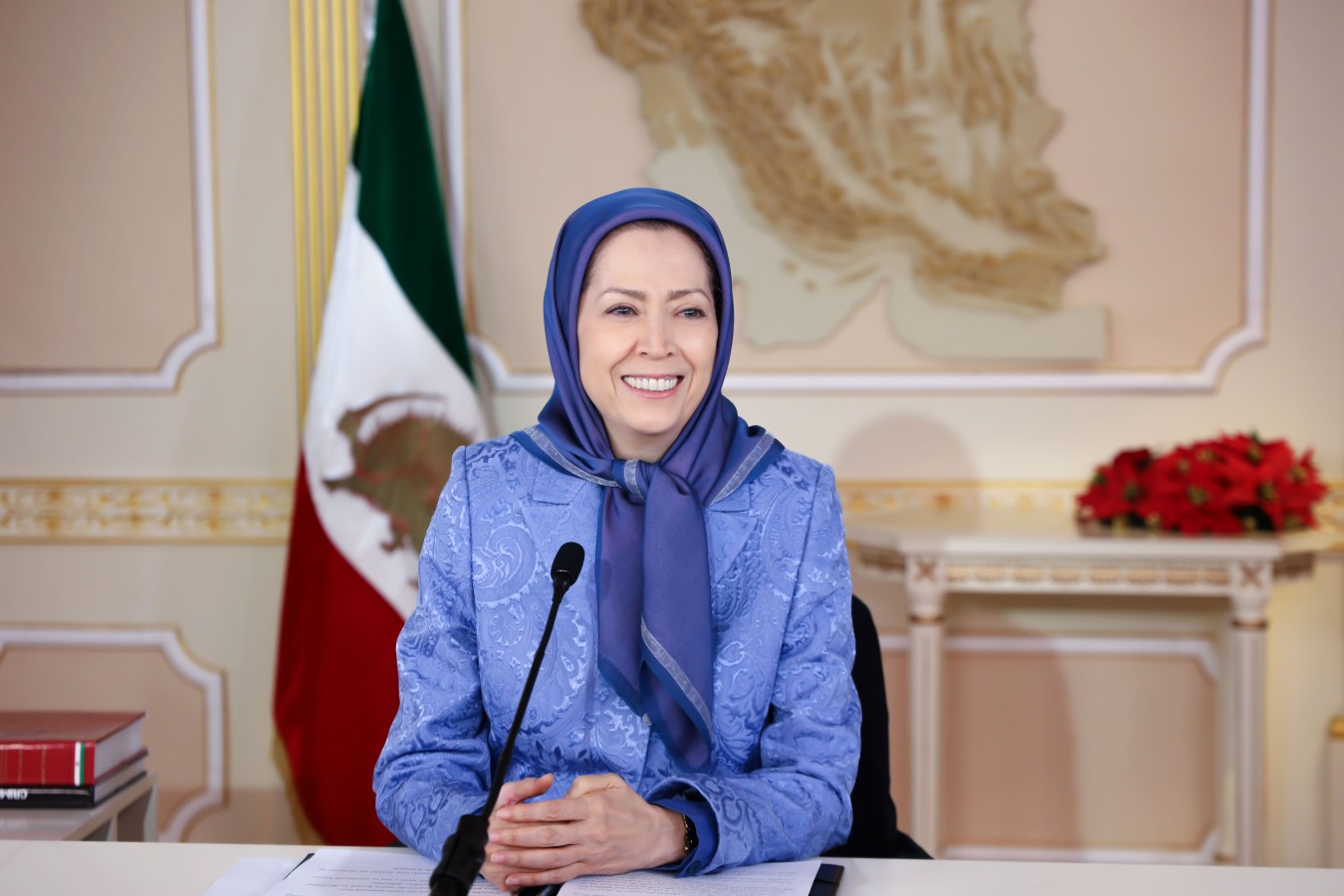
Early Involvement
Maryam Rajavi began her activism as a young university student at Sharif University of Technology where she studied metallurgical engineering, organising anti-Shah student protests.
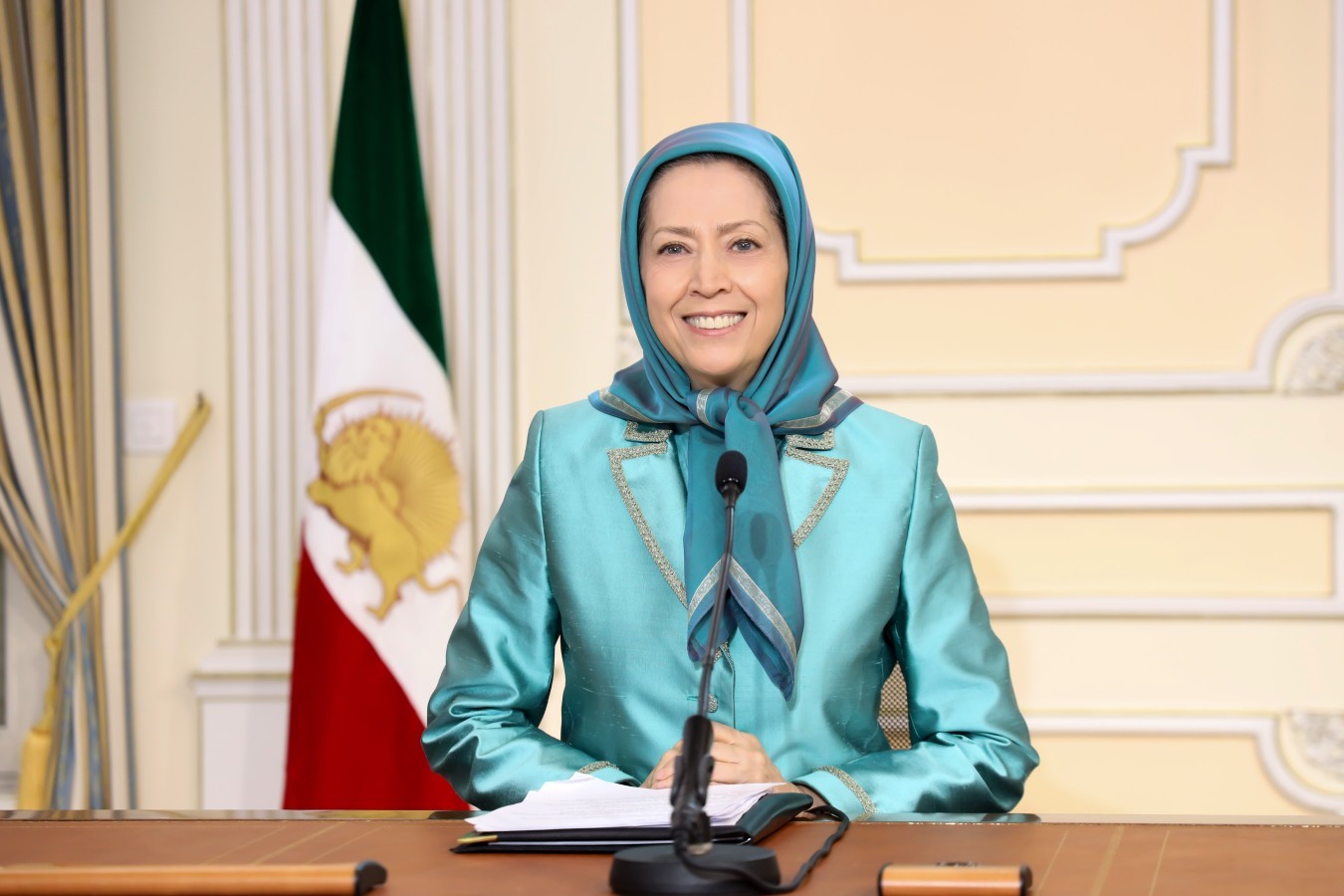
Personal Sacrifice
Mrs Rajavi came face to face with the realities of dictatorship early on, her older sister, Narges, was killed by the Shah's regime, and her younger sister, Massoumeh, was executed by the clerical regime after extensive torture while pregnant in 1982.
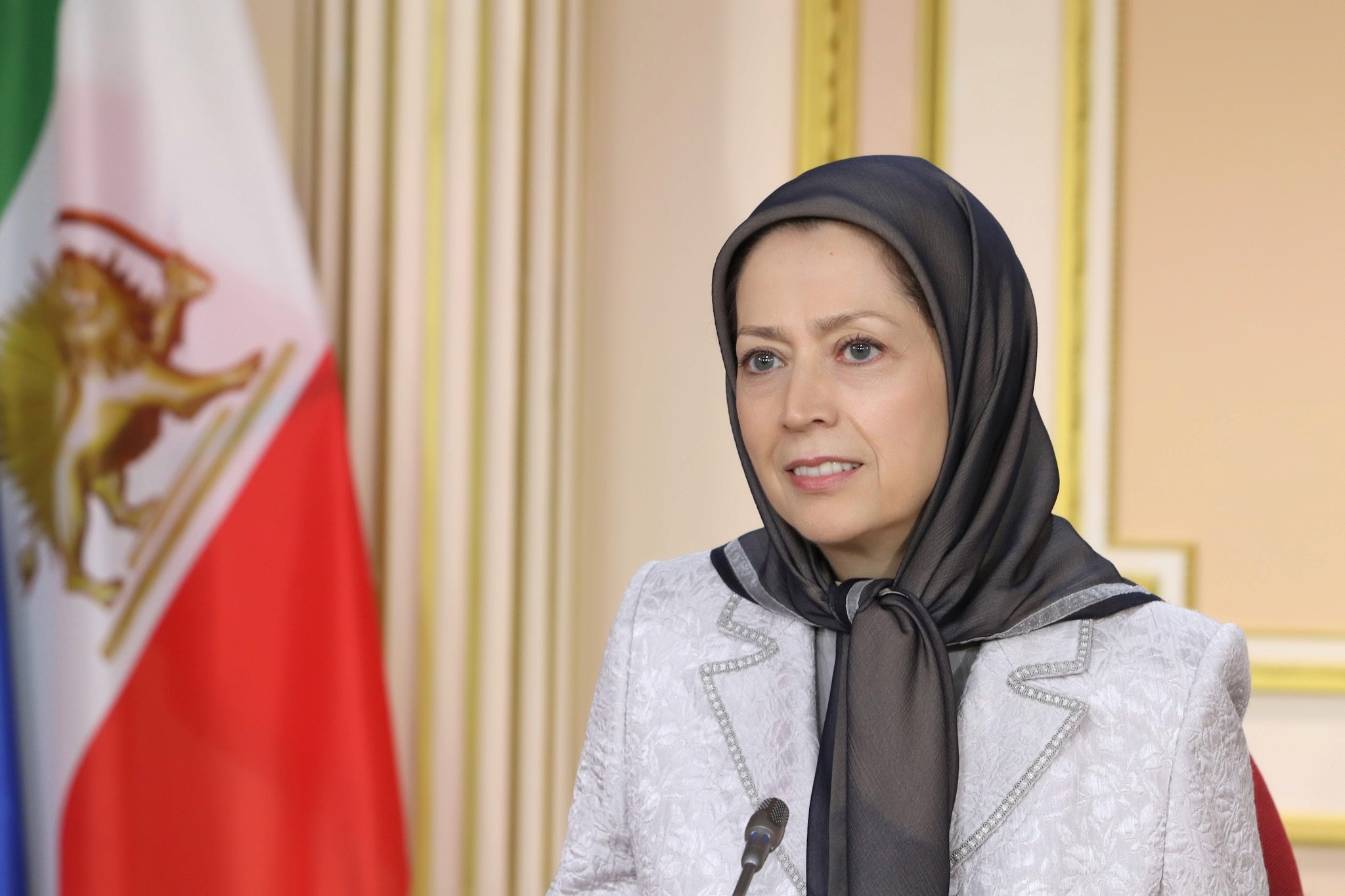
Leadership Role
Elected as the NCRI's President-elect in 1993, Mrs Rajavi has been crucial in shaping opposition strategy and advocating for a secular, democratic Iran. She champions women's rights and has expanded NCRI’s international influence.

Vision for Iran
Mrs Rajavi’s 10-point plan includes a republic with the separation of religion and state, gender equality, abolition of the death penalty, and human rights. She envisions a non-nuclear Iran fostering peace and cooperation.

Global Advocacy
Mrs Rajavi has addressed international forums, including the European Parliament and the U.S. Congress, highlighting Iran's human rights abuses and advocating for democratic change.

Early Involvement
Maryam Rajavi began her activism as a young university student at Sharif University of Technology where she studied metallurgical engineering, organising anti-Shah student protests.

Personal Sacrifice
Mrs Rajavi came face to face with the realities of dictatorship early on, her older sister, Narges, was killed by the Shah's regime, and her younger sister, Massoumeh, was executed by the clerical regime after extensive torture while pregnant in 1982.

Leadership Role
Elected as the NCRI's President-elect in 1993, Mrs Rajavi has been crucial in shaping opposition strategy and advocating for a secular, democratic Iran. She champions women's rights and has expanded NCRI’s international influence.

Vision for Iran
Mrs Rajavi’s 10-point plan includes a republic with the separation of religion and state, gender equality, abolition of the death penalty, and human rights. She envisions a non-nuclear Iran fostering peace and cooperation.

Global Advocacy
Mrs Rajavi has addressed international forums, including the European Parliament and the U.S. Congress, highlighting Iran's human rights abuses and advocating for democratic change.

Early Involvement
Maryam Rajavi began her activism as a young university student at Sharif University of Technology where she studied metallurgical engineering, organising anti-Shah student protests.

Personal Sacrifice
Mrs Rajavi came face to face with the realities of dictatorship early on, her older sister, Narges, was killed by the Shah's regime, and her younger sister, Massoumeh, was executed by the clerical regime after extensive torture while pregnant in 1982.

Leadership Role
Elected as the NCRI's President-elect in 1993, Mrs Rajavi has been crucial in shaping opposition strategy and advocating for a secular, democratic Iran. She champions women's rights and has expanded NCRI’s international influence.

Vision for Iran
Mrs Rajavi’s 10-point plan includes a republic with the separation of religion and state, gender equality, abolition of the death penalty, and human rights. She envisions a non-nuclear Iran fostering peace and cooperation.

Global Advocacy
Mrs Rajavi has addressed international forums, including the European Parliament and the U.S. Congress, highlighting Iran's human rights abuses and advocating for democratic change.

Early Involvement
Maryam Rajavi began her activism as a young university student at Sharif University of Technology where she studied metallurgical engineering, organising anti-Shah student protests.

Personal Sacrifice
Mrs Rajavi came face to face with the realities of dictatorship early on, her older sister, Narges, was killed by the Shah's regime, and her younger sister, Massoumeh, was executed by the clerical regime after extensive torture while pregnant in 1982.

Leadership Role
Elected as the NCRI's President-elect in 1993, Mrs Rajavi has been crucial in shaping opposition strategy and advocating for a secular, democratic Iran. She champions women's rights and has expanded NCRI’s international influence.

Vision for Iran
Mrs Rajavi’s 10-point plan includes a republic with the separation of religion and state, gender equality, abolition of the death penalty, and human rights. She envisions a non-nuclear Iran fostering peace and cooperation.

Global Advocacy
Mrs Rajavi has addressed international forums, including the European Parliament and the U.S. Congress, highlighting Iran's human rights abuses and advocating for democratic change.

Early Involvement
Maryam Rajavi began her activism as a young university student at Sharif University of Technology where she studied metallurgical engineering, organising anti-Shah student protests.

Personal Sacrifice
Mrs Rajavi came face to face with the realities of dictatorship early on, her older sister, Narges, was killed by the Shah's regime, and her younger sister, Massoumeh, was executed by the clerical regime after extensive torture while pregnant in 1982.

Leadership Role
Elected as the NCRI's President-elect in 1993, Mrs Rajavi has been crucial in shaping opposition strategy and advocating for a secular, democratic Iran. She champions women's rights and has expanded NCRI’s international influence.

Vision for Iran
Mrs Rajavi’s 10-point plan includes a republic with the separation of religion and state, gender equality, abolition of the death penalty, and human rights. She envisions a non-nuclear Iran fostering peace and cooperation.

Global Advocacy
Mrs Rajavi has addressed international forums, including the European Parliament and the U.S. Congress, highlighting Iran's human rights abuses and advocating for democratic change.

Early Involvement
Maryam Rajavi began her activism as a young university student at Sharif University of Technology where she studied metallurgical engineering, organising anti-Shah student protests.

Personal Sacrifice
Mrs Rajavi came face to face with the realities of dictatorship early on, her older sister, Narges, was killed by the Shah's regime, and her younger sister, Massoumeh, was executed by the clerical regime after extensive torture while pregnant in 1982.

Leadership Role
Elected as the NCRI's President-elect in 1993, Mrs Rajavi has been crucial in shaping opposition strategy and advocating for a secular, democratic Iran. She champions women's rights and has expanded NCRI’s international influence.

Vision for Iran
Mrs Rajavi’s 10-point plan includes a republic with the separation of religion and state, gender equality, abolition of the death penalty, and human rights. She envisions a non-nuclear Iran fostering peace and cooperation.

Global Advocacy
Mrs Rajavi has addressed international forums, including the European Parliament and the U.S. Congress, highlighting Iran's human rights abuses and advocating for democratic change.

Early Involvement
Maryam Rajavi began her activism as a young university student at Sharif University of Technology where she studied metallurgical engineering, organising anti-Shah student protests.

Personal Sacrifice
Mrs Rajavi came face to face with the realities of dictatorship early on, her older sister, Narges, was killed by the Shah's regime, and her younger sister, Massoumeh, was executed by the clerical regime after extensive torture while pregnant in 1982.

Leadership Role
Elected as the NCRI's President-elect in 1993, Mrs Rajavi has been crucial in shaping opposition strategy and advocating for a secular, democratic Iran. She champions women's rights and has expanded NCRI’s international influence.

Vision for Iran
Mrs Rajavi’s 10-point plan includes a republic with the separation of religion and state, gender equality, abolition of the death penalty, and human rights. She envisions a non-nuclear Iran fostering peace and cooperation.

Global Advocacy
Mrs Rajavi has addressed international forums, including the European Parliament and the U.S. Congress, highlighting Iran's human rights abuses and advocating for democratic change.

Early Involvement
Maryam Rajavi began her activism as a young university student at Sharif University of Technology where she studied metallurgical engineering, organising anti-Shah student protests.

Personal Sacrifice
Mrs Rajavi came face to face with the realities of dictatorship early on, her older sister, Narges, was killed by the Shah's regime, and her younger sister, Massoumeh, was executed by the clerical regime after extensive torture while pregnant in 1982.

Leadership Role
Elected as the NCRI's President-elect in 1993, Mrs Rajavi has been crucial in shaping opposition strategy and advocating for a secular, democratic Iran. She champions women's rights and has expanded NCRI’s international influence.

Vision for Iran
Mrs Rajavi’s 10-point plan includes a republic with the separation of religion and state, gender equality, abolition of the death penalty, and human rights. She envisions a non-nuclear Iran fostering peace and cooperation.

Global Advocacy
Mrs Rajavi has addressed international forums, including the European Parliament and the U.S. Congress, highlighting Iran's human rights abuses and advocating for democratic change.

Early Involvement
Maryam Rajavi began her activism as a young university student at Sharif University of Technology where she studied metallurgical engineering, organising anti-Shah student protests.

Personal Sacrifice
Mrs Rajavi came face to face with the realities of dictatorship early on, her older sister, Narges, was killed by the Shah's regime, and her younger sister, Massoumeh, was executed by the clerical regime after extensive torture while pregnant in 1982.

Leadership Role
Elected as the NCRI's President-elect in 1993, Mrs Rajavi has been crucial in shaping opposition strategy and advocating for a secular, democratic Iran. She champions women's rights and has expanded NCRI’s international influence.

Vision for Iran
Mrs Rajavi’s 10-point plan includes a republic with the separation of religion and state, gender equality, abolition of the death penalty, and human rights. She envisions a non-nuclear Iran fostering peace and cooperation.

Global Advocacy
Mrs Rajavi has addressed international forums, including the European Parliament and the U.S. Congress, highlighting Iran's human rights abuses and advocating for democratic change.

Early Involvement
Maryam Rajavi began her activism as a young university student at Sharif University of Technology where she studied metallurgical engineering, organising anti-Shah student protests.

Personal Sacrifice
Mrs Rajavi came face to face with the realities of dictatorship early on, her older sister, Narges, was killed by the Shah's regime, and her younger sister, Massoumeh, was executed by the clerical regime after extensive torture while pregnant in 1982.

Leadership Role
Elected as the NCRI's President-elect in 1993, Mrs Rajavi has been crucial in shaping opposition strategy and advocating for a secular, democratic Iran. She champions women's rights and has expanded NCRI’s international influence.

Vision for Iran
Mrs Rajavi’s 10-point plan includes a republic with the separation of religion and state, gender equality, abolition of the death penalty, and human rights. She envisions a non-nuclear Iran fostering peace and cooperation.

Global Advocacy
Mrs Rajavi has addressed international forums, including the European Parliament and the U.S. Congress, highlighting Iran's human rights abuses and advocating for democratic change.

Early Involvement
Maryam Rajavi began her activism as a young university student at Sharif University of Technology where she studied metallurgical engineering, organising anti-Shah student protests.

Personal Sacrifice
Mrs Rajavi came face to face with the realities of dictatorship early on, her older sister, Narges, was killed by the Shah's regime, and her younger sister, Massoumeh, was executed by the clerical regime after extensive torture while pregnant in 1982.

Leadership Role
Elected as the NCRI's President-elect in 1993, Mrs Rajavi has been crucial in shaping opposition strategy and advocating for a secular, democratic Iran. She champions women's rights and has expanded NCRI’s international influence.

Vision for Iran
Mrs Rajavi’s 10-point plan includes a republic with the separation of religion and state, gender equality, abolition of the death penalty, and human rights. She envisions a non-nuclear Iran fostering peace and cooperation.

Global Advocacy
Mrs Rajavi has addressed international forums, including the European Parliament and the U.S. Congress, highlighting Iran's human rights abuses and advocating for democratic change.

Early Involvement
Maryam Rajavi began her activism as a young university student at Sharif University of Technology where she studied metallurgical engineering, organising anti-Shah student protests.

Personal Sacrifice
Mrs Rajavi came face to face with the realities of dictatorship early on, her older sister, Narges, was killed by the Shah's regime, and her younger sister, Massoumeh, was executed by the clerical regime after extensive torture while pregnant in 1982.

Leadership Role
Elected as the NCRI's President-elect in 1993, Mrs Rajavi has been crucial in shaping opposition strategy and advocating for a secular, democratic Iran. She champions women's rights and has expanded NCRI’s international influence.

Vision for Iran
Mrs Rajavi’s 10-point plan includes a republic with the separation of religion and state, gender equality, abolition of the death penalty, and human rights. She envisions a non-nuclear Iran fostering peace and cooperation.

Global Advocacy
Mrs Rajavi has addressed international forums, including the European Parliament and the U.S. Congress, highlighting Iran's human rights abuses and advocating for democratic change.
The 1988 Massacre
The 1988
Massacre


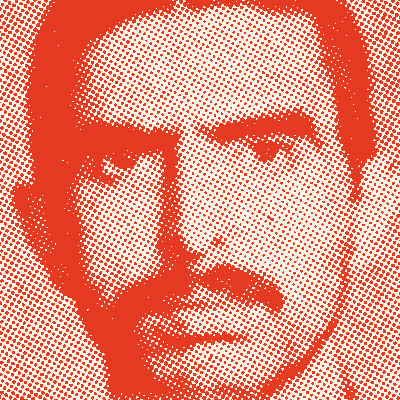



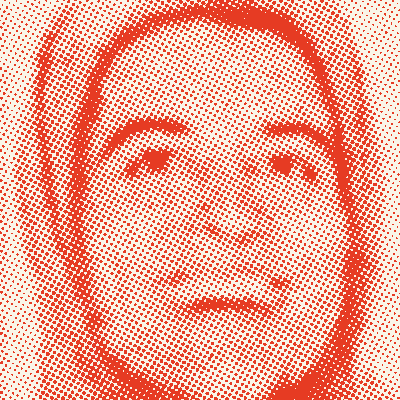
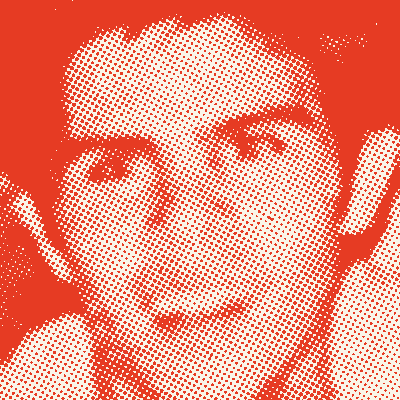

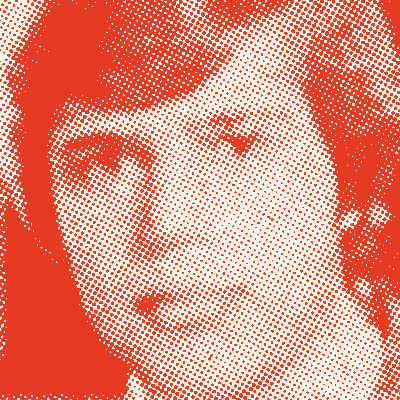

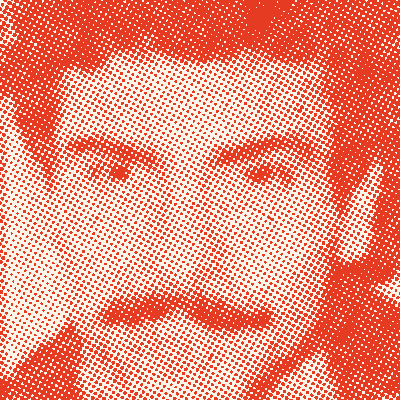
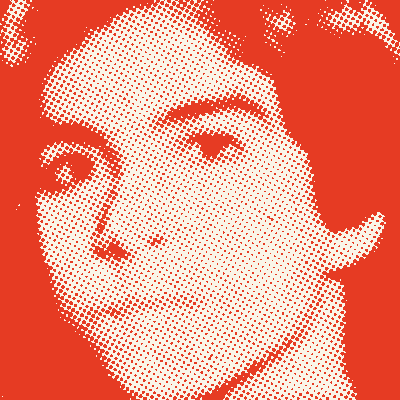
In the summer of 1988, the Iranian regime executed 30,000 political prisoners based on a fatwa by the religious dictator Khomeini, marking the largest massacre of political prisoners since World War II.
In the summer of 1988, the Iranian regime executed 30,000 political prisoners based on a fatwa by the religious dictator Khomeini, marking the largest massacre of political prisoners since World War II.
‘Death Commissions’ were formed across Iran, one of which included Ebrahim Raisi, who was later selected by Iran’s dictator Khamenei as the President of Iran until his recent death.
The commissions sent political prisoners who refused to abandon their beliefs to execution. The procedures often lasted only a few minutes. Prisoners were called one by one and asked if they still supported the PMOI/MEK. Those who answered yes were executed. Even prisoners who avoided expressing support had to pass other tests like televised confessions or betraying fellow prisoners. The execution was not limited to those affiliated with the MEK/PMOI and was later extended to other political prisoners.
Most prisoners were hanged, some were shot, and their bodies were buried in mass graves. Families were often not informed of their loved ones' fate, and many grave locations remain unknown.
The Iranian regime has consistently denied the scale of the executions and the involvement of high-ranking officials. However, substantial evidence and testimonies from former officials and human rights organizations have detailed the events. Since 2016, nearly 100 Death Commission members have been identified, many still holding senior positions in the judiciary or government.
Only one senior Iranian official, Hossein Ali Montazeri,Deputy Supreme Leader and Khomeini’s designated successor, criticised the executions, for which he was banned and placed on house arrest until his death in 2009.
The perpetrators have continued to enjoy impunity, while survivors and victims' families persist in seeking justice. Crimes against humanity are not bound by statutes of limitations, making the 1988 massacre still prosecutable despite occurring over three decades ago.
Key Perpetrators of the 1988 Massacre in Iran
These individuals were central in carrying out the fatwa issued by religious dictator Khomeini, which led to the mass execution of political prisoners in 1988. Human rights organizations and survivors of the massacre have widely condemned their actions. However, instead of facing justice, many were rewarded with high-ranking positions by the regime for their involvement in the 1988 massacre.